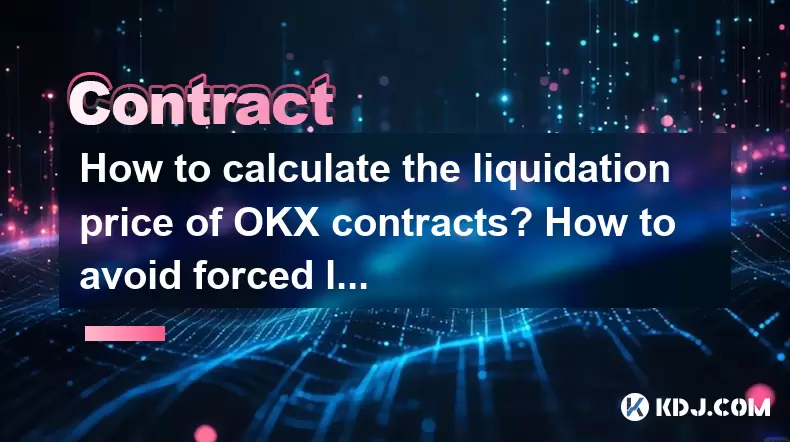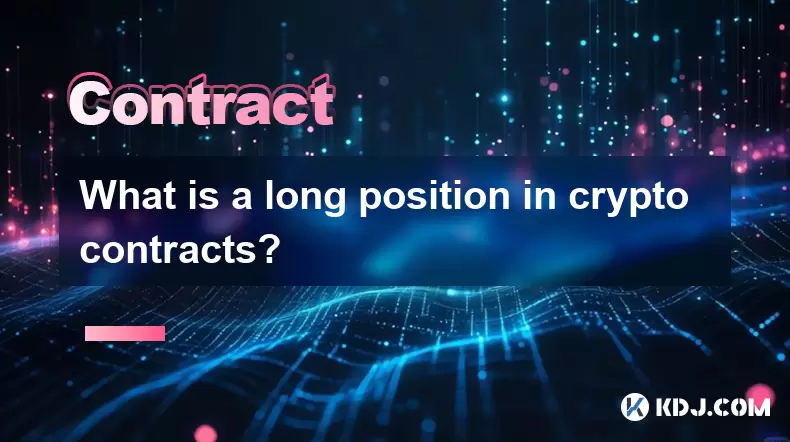-
 Bitcoin
Bitcoin $116700
2.16% -
 Ethereum
Ethereum $3830
5.76% -
 XRP
XRP $3.082
4.56% -
 Tether USDt
Tether USDt $1.000
0.04% -
 BNB
BNB $777.8
1.96% -
 Solana
Solana $173.2
5.46% -
 USDC
USDC $0.0000
0.02% -
 Dogecoin
Dogecoin $0.2146
6.85% -
 TRON
TRON $0.3384
0.92% -
 Cardano
Cardano $0.7676
5.51% -
 Hyperliquid
Hyperliquid $39.28
4.90% -
 Sui
Sui $3.723
9.07% -
 Stellar
Stellar $0.4164
6.32% -
 Chainlink
Chainlink $17.36
5.78% -
 Bitcoin Cash
Bitcoin Cash $580.9
3.62% -
 Hedera
Hedera $0.2544
5.50% -
 Ethena USDe
Ethena USDe $1.001
0.02% -
 Avalanche
Avalanche $22.81
3.81% -
 Litecoin
Litecoin $120.8
3.60% -
 UNUS SED LEO
UNUS SED LEO $8.956
-0.35% -
 Toncoin
Toncoin $3.311
4.28% -
 Shiba Inu
Shiba Inu $0.00001266
4.15% -
 Uniswap
Uniswap $10.10
5.97% -
 Polkadot
Polkadot $3.786
4.80% -
 Dai
Dai $1.000
0.01% -
 Monero
Monero $280.4
-4.02% -
 Bitget Token
Bitget Token $4.405
1.69% -
 Cronos
Cronos $0.1480
5.13% -
 Pepe
Pepe $0.00001087
5.67% -
 Ethena
Ethena $0.6348
11.62%
How to calculate the liquidation price of OKX contracts? How to avoid forced liquidation when opening a position?
To avoid forced liquidation on OKX, use stop-loss orders, monitor margin levels, reduce leverage, diversify your portfolio, and utilize risk management tools like Position Taker and Trailing Stop.
May 16, 2025 at 09:57 pm

Understanding how to calculate the liquidation price of OKX contracts and how to avoid forced liquidation is crucial for any trader engaging in futures and perpetual contracts. In this guide, we will delve into the specifics of calculating the liquidation price for both long and short positions on OKX, as well as strategies to manage and avoid forced liquidation when opening a position.
Understanding Liquidation Price
Liquidation price is the price at which a trader's position is forcibly closed due to insufficient margin. This occurs when the market moves against the trader's position, causing the account's equity to fall below the maintenance margin level. Calculating this price is essential for managing risk and understanding potential losses.
Calculating Liquidation Price for Long Positions
For a long position on OKX, the liquidation price is calculated based on several factors including entry price, leverage, and maintenance margin rate. The formula for a long position is:
[ \text{Liquidation Price} = \frac{\text{Entry Price}}{(1 + \text{Maintenance Margin Rate} \times \text{Leverage})} ]
Here’s how you can calculate it step-by-step:
- Determine your entry price: This is the price at which you opened your long position.
- Identify the leverage: This is the amount of leverage you applied to your position.
- Find the maintenance margin rate: This is set by OKX and can vary by contract. For example, if the maintenance margin rate is 0.5%, you would use 0.005 in the calculation.
- Plug these values into the formula: If you entered a long position at $50,000 with 10x leverage and a maintenance margin rate of 0.5%, your liquidation price would be:
[ \text{Liquidation Price} = \frac{50000}{(1 + 0.005 \times 10)} = \frac{50000}{1.05} \approx 47619.05 ]
Calculating Liquidation Price for Short Positions
For a short position, the calculation is slightly different. The formula is:
[ \text{Liquidation Price} = \frac{\text{Entry Price}}{(1 - \text{Maintenance Margin Rate} \times \text{Leverage})} ]
Here’s the step-by-step process:
- Determine your entry price: This is the price at which you opened your short position.
- Identify the leverage: This is the amount of leverage you applied to your position.
- Find the maintenance margin rate: Use the same rate as provided by OKX.
- Plug these values into the formula: If you entered a short position at $50,000 with 10x leverage and a maintenance margin rate of 0.5%, your liquidation price would be:
[ \text{Liquidation Price} = \frac{50000}{(1 - 0.005 \times 10)} = \frac{50000}{0.95} \approx 52631.58 ]
Strategies to Avoid Forced Liquidation
To avoid forced liquidation, traders must manage their positions carefully. Here are some strategies to consider:
Use Stop-Loss Orders
Stop-loss orders can help limit losses by automatically closing a position when the market reaches a certain price. Here’s how to set a stop-loss order on OKX:
- Navigate to the trading page: Go to the futures or perpetual contract trading section.
- Select your position: Choose the position you want to set a stop-loss for.
- Open the order panel: Click on the "Order" button.
- Select "Stop-Limit": Choose the stop-limit order type.
- Set the trigger price: Enter the price at which you want the order to trigger.
- Set the limit price: Enter the price at which you want the order to be executed.
- Confirm the order: Review and confirm the stop-loss order.
Monitor Margin Levels
Monitoring your margin levels is crucial to avoid liquidation. OKX provides tools to track your margin levels in real-time:
- Check the margin ratio: The margin ratio is the ratio of your account balance to the total position value. A lower margin ratio indicates higher risk.
- Use the OKX app or website: Regularly check your positions and margin levels through the OKX platform.
- Adjust positions if necessary: If your margin ratio approaches the maintenance margin level, consider reducing your position size or adding more funds to your account.
Reduce Leverage
Reducing leverage can significantly lower the risk of liquidation. Here’s how to adjust your leverage on OKX:
- Go to the trading page: Access the futures or perpetual contract trading section.
- Select your position: Choose the position for which you want to adjust the leverage.
- Open the position panel: Click on the "Position" button.
- Adjust the leverage: Use the slider or input field to set your desired leverage level.
- Confirm the change: Review and confirm the new leverage setting.
Diversify Your Portfolio
Diversifying your portfolio can help mitigate risk. Instead of putting all your funds into one position, consider spreading your investments across different assets:
- Trade multiple assets: Engage in trading different cryptocurrencies to spread risk.
- Balance your positions: Ensure that no single position dominates your portfolio.
- Regularly review your portfolio: Adjust your positions based on market conditions and performance.
Using Risk Management Tools
OKX provides several risk management tools that can help traders avoid liquidation. Here’s how to use some of these tools:
Position Taker
Position Taker allows you to set a target price for closing a position:
- Navigate to the trading page: Go to the futures or perpetual contract trading section.
- Select your position: Choose the position you want to manage.
- Open the position panel: Click on the "Position" button.
- Set the target price: Enter the price at which you want to close the position.
- Confirm the order: Review and confirm the Position Taker order.
Trailing Stop
Trailing Stop orders can help lock in profits while minimizing losses:
- Navigate to the trading page: Go to the futures or perpetual contract trading section.
- Select your position: Choose the position you want to manage.
- Open the order panel: Click on the "Order" button.
- Select "Trailing Stop": Choose the trailing stop order type.
- Set the trailing value: Enter the value you want the order to trail by.
- Confirm the order: Review and confirm the trailing stop order.
FAQs
Q1: What happens if my position gets liquidated on OKX?
If your position gets liquidated on OKX, your position will be automatically closed at the market price, and any remaining funds in your account will be used to cover the losses. If the losses exceed your account balance, you may end up with a negative balance, which you will need to cover.
Q2: Can I reopen a position after it has been liquidated?
Yes, you can reopen a position after it has been liquidated, provided you have sufficient funds in your account. However, it's important to review your trading strategy and risk management before entering a new position.
Q3: How often should I check my margin levels on OKX?
It's advisable to check your margin levels regularly, especially during periods of high market volatility. Monitoring your margin levels at least once every few hours can help you stay on top of your positions and avoid unexpected liquidations.
Q4: Are there any fees associated with liquidation on OKX?
Yes, OKX charges a liquidation fee to cover the costs of managing and executing the liquidation process. The exact fee can vary, so it's important to review OKX's fee schedule for the most current information.
Disclaimer:info@kdj.com
The information provided is not trading advice. kdj.com does not assume any responsibility for any investments made based on the information provided in this article. Cryptocurrencies are highly volatile and it is highly recommended that you invest with caution after thorough research!
If you believe that the content used on this website infringes your copyright, please contact us immediately (info@kdj.com) and we will delete it promptly.
- BlockchainFX, Bitcoin Swift, Crypto Presales: What's the Hype?
- 2025-08-07 19:10:13
- SHIB Community at Crossroads: Shytoshi Kusama's Leadership Under Scrutiny as Elections Loom
- 2025-08-07 18:30:13
- IREN Overtakes: A New King in the Bitcoin Miner Hashrate Race?
- 2025-08-07 16:31:29
- Memecoins Mania: Whales Eye Pepe Dollar (PEPD) as Bonk Cools Off, While MoonBull Hogs the Spotlight!
- 2025-08-07 16:51:17
- Unilabs, PEPE, and Investment Risk: Navigating the Crypto Hype
- 2025-08-07 16:31:29
- Meme Coin Mania: Rug Pulls, CZ-Inspired Tokens, and the Wild West of Crypto
- 2025-08-07 16:57:14
Related knowledge

What programming languages are used for smart contracts?
Aug 07,2025 at 06:07pm
Understanding Smart Contracts and Their Execution EnvironmentSmart contracts are self-executing programs deployed on blockchain networks that automati...

What is a long position in crypto contracts?
Aug 07,2025 at 06:29pm
Understanding the Concept of a Long Position in Crypto ContractsA long position in crypto contracts refers to a trading strategy where a trader buys a...

Why is my Bitstamp futures position being liquidated?
Jul 23,2025 at 11:08am
Understanding Futures Liquidation on BitstampFutures trading on Bitstamp involves borrowing funds to open leveraged positions, which amplifies both po...

How to report Bitstamp futures for taxes?
Jul 30,2025 at 08:35am
Understanding Bitstamp Futures and Taxable EventsWhen trading Bitstamp futures, it’s essential to recognize that these financial instruments are treat...

Does Bitstamp offer inverse contracts?
Jul 23,2025 at 01:28pm
Understanding Inverse Contracts in Cryptocurrency TradingIn the realm of cryptocurrency derivatives, inverse contracts are a specific type of futures ...

What is the difference between futures and perpetuals on Bitstamp?
Jul 27,2025 at 05:08am
Understanding Futures Contracts on BitstampFutures contracts on Bitstamp are financial derivatives that allow traders to speculate on the future price...

What programming languages are used for smart contracts?
Aug 07,2025 at 06:07pm
Understanding Smart Contracts and Their Execution EnvironmentSmart contracts are self-executing programs deployed on blockchain networks that automati...

What is a long position in crypto contracts?
Aug 07,2025 at 06:29pm
Understanding the Concept of a Long Position in Crypto ContractsA long position in crypto contracts refers to a trading strategy where a trader buys a...

Why is my Bitstamp futures position being liquidated?
Jul 23,2025 at 11:08am
Understanding Futures Liquidation on BitstampFutures trading on Bitstamp involves borrowing funds to open leveraged positions, which amplifies both po...

How to report Bitstamp futures for taxes?
Jul 30,2025 at 08:35am
Understanding Bitstamp Futures and Taxable EventsWhen trading Bitstamp futures, it’s essential to recognize that these financial instruments are treat...

Does Bitstamp offer inverse contracts?
Jul 23,2025 at 01:28pm
Understanding Inverse Contracts in Cryptocurrency TradingIn the realm of cryptocurrency derivatives, inverse contracts are a specific type of futures ...

What is the difference between futures and perpetuals on Bitstamp?
Jul 27,2025 at 05:08am
Understanding Futures Contracts on BitstampFutures contracts on Bitstamp are financial derivatives that allow traders to speculate on the future price...
See all articles

























































































